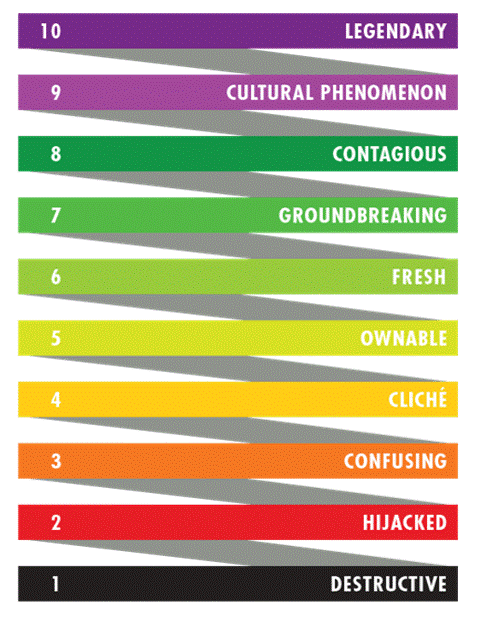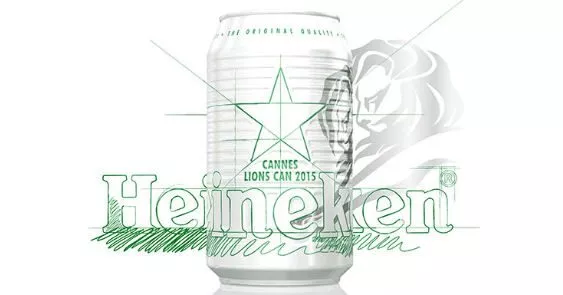Establishing a Culture and Language of Creativity to Inspire Creative Work
“The riskiest thing is to be boring. You need an element of risk to make great creative work. You also need to foster a culture, the right atmosphere and the attitude” – Harry Dromey
People’s perceptions of what makes something creative is often subjective and varied. Individuals will impart their own perspectives and preferences on a piece of work and evaluate based on these biases. One person’s fresh and innovative may be another’s cliched and played out. A distinctive and captivating design in someone’s eyes may be boring and uninspired to someone else. A difficulty with discussing creativity can be adopting language that people can share to express and compare opinions. Without a common culture and a way of thinking about creativity it can be hard for agencies and marketers to set about improving their work if viewpoints can’t be objectively understood.
So how do we make sense of individualised conceptions? How do we move towards a more uniformed construct of thinking about and analysing creativity so we can work more cohesively to provide more creative outputs?
Well, by looking at Dutch beer company Heineken and Global Advertising Agency Leo Burnett as examples we may have an answer. Both organisations have created internal frameworks that help guide analysis of their creative work by using companywide definitions of creativity.
Heineken’s Creative Ladder
Heineken use what they refer to as the ‘Creative Ladder’, a 10-step ladder ranging from destructive creativity (which is likely to have a detrimental impact on brand and product) to legendary creativity (which is likely to have a remaining cultural impact and legacy for the brand). This is a standardised metric used across all Heineken marketing personnel to evaluate advertising campaigns and communications, as a means to produce higher level creative work.

As Cinzia Moreli-Verhoog (Senior Director Global Marketing Capabilities at Heineken) describes in this Fast Company article “If you want great creativity you need to be able to talk about it and to give it a language, because more often than not, creativity is very subjective, it has a lot to do with gut feelings, and the experience and legacy of the different individuals. By introducing the creative ladder, we created a language within Heineken”.
It’s promoted within the company that all created campaigns must be considered a 5 or above on this ladder. They therefore conduct internal reviews and discuss all creative works to ensure they reach beyond the cliché, the confusing, the hijacked and the destructive, to something more imaginative.
Moreli-Verhoog explains “the cliché is not just a general definition but also a very clear creative barrier that we never want to go below. With all the brands where we have creative ambition, we try to break the category codes and provide consumers with something different”
By providing this understanding of what defines creativity, Heineken are able to implement a philosophy of best practice to scale behaviours, where everyone is working together with an aligned mindset to achieve the same outcomes.
Interestingly, the marketing department also takes part in what is known as ‘Creative Monday’, an exercise where they are tasked with judging external pieces of creative on their developed ladder. They are asked to articulate reasons for their rankings, this often devolves into passionate debate, but most importantly, it keeps alive a culture of creativity within the organisation and betters their ability to assess and analyse creative works in a standardised manner.
Leo Burnett’s HumanKind Scale
Leo Burnett similarly utilise an internal evaluation system termed ‘The 7+ HumanKind Scale’. Their creative works are matched up against the scale (by a Global Product Committee), as they aspire for all campaigns to reach a 7 or above. The ethos behind the scale is to “lead every Leo Burnett office to a higher level of creativity” with a brand mission to produce creative works that transform human behaviour.

Each employee knows they are tasked with making inspiring and well executed campaigns, with the value of creativity persistent across the entire company. Truly creative ideas require complete creative commitment, the HumanKind scale acts as a guideline for all involved to work collaboratively towards truly ground-breaking work.
The 10 steps are explained more here.
Conclusion
Heineken and Leo Burnett have put in place structures and a culture where creativity is able to flourish. Through a shared language and way of thinking they have created an alignment in discission which is so often guided by subjectivity




